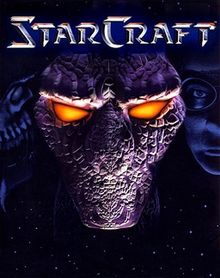
Video Game of the Day is a daily show available on Amazon Alexa devices and here on this website. Each day, we briefly discuss the history of a single game, randomly chosen. If you would like to listen on your daily flash briefing, you can enable Video Game of the Day here: https://amzn.to/2CNx2NJ.
Transcript:
Hello and welcome! My name is Katosepe and I’ll be your host for today’s Video Game of the Day.
It’s tough to overstate the importance of Blizzard in the late 90’s and early 2000’s. They’d been making games and ports for a while but after Warcraft, it was like they could do no wrong. Warcraft 2 and Diablo followed shortly afterwards, each mega-hits in their own right. In 1998, though, they released what would become the third pillar in the Blizzard trifecta. Today, let’s talk about Blizzard’s jump from fantasy to science fiction. Today’s game is StarCraft, developed by Blizzard Entertainment and released on PC in 1998.
StarCraft is the first in the sci-fi real-time strategy series. Like Warcraft, the game has you choosing a faction, building a base, and defeating your enemy with a superior army and tactics. StarCraft has three races to choose from: the human Terrans, who have middle of the road defense but ranged attacks on nearly all units, the bug-like Zerg which has weaker units but produces them in greater numbers, or the advanced Protoss, which are better armed than other factions but come at greater cost.
Unlike most RTS’s of the time, StarCraft’s different races aren’t just palette swaps with a couple unique units thrown in, each race plays very differently from the others and has entirely unique units and strategies associated with them. Part of the challenge to players comes from learning and understanding how to play with and fight against each of the other races.
StarCraft’s storyline is broken into three parts, one campaign for each faction. Terrans are first, followed by Zerg, and then Protoss. Each story leads into the next for an overall plot told in three arcs. Each mission is preceded by a briefing, giving players some context for what is going on and they typically end in a small cutscene showing the aftermath. The campaign has thirty missions total, ten for each race, and objectives vary from mission to mission. Some maps will be your standard gameplay while others will only give players a specific number of units to complete a task while others still will have specific timed objectives.
StarCraft’s single-player campaign was well received by it has continued to be a household name due to the massively popular multiplayer. Not only has competitive StarCraft become hugely popular worldwide, but the map maker allowed modders to create extremely unique modes and battle.net allowed these maps to be shared on the internet. Many genres now popular in their own rights came from ideas found in StarCraft maps such as the MOBA and Tower Defense genres.
StarCraft would go on to see three expansions made for it, with two being developed by outside developers and StarCraft: Brood War being the first continuation of the storyline by Blizzard. Despite only receiving a single sequel in the 22 years since StarCraft’s release, StarCraft continues to be played worldwide to this day.
Thank you so much for listening! If you enjoyed the show, please leave a review on Amazon for us to let others know what you thought. It helps bring in more listeners which will help us grow bigger and better. You can also listen to our archived episodes on videogameoftheday.com. Don’t forget to check back here tomorrow for another Video Game of the Day!
To enable Video Game of the Day on Amazon Echo devices: https://amzn.to/2CNx2NJ
Music Provided By:
In Love by FSM Team feat. < e s c p > | https://www.free-stock-music.com/artist.fsm-team.html
Music promoted by https://www.free-stock-music.com
Attribution 4.0 International (CC BY 4.0)




You must be logged in to post a comment.